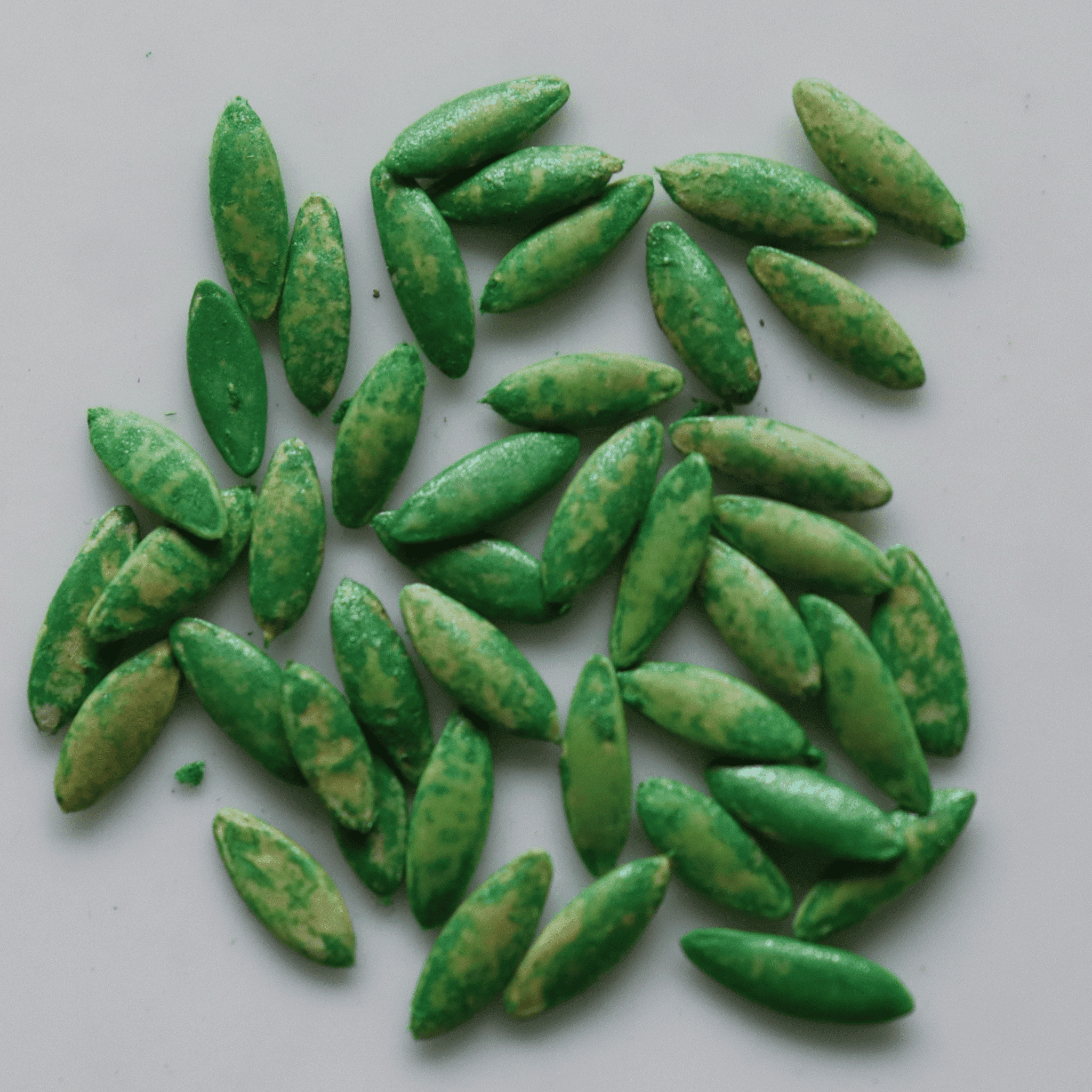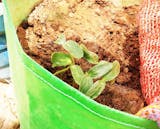

Product Description - Organic Green Salad Cucumber Seeds - Open Pollinated
Cucumbers for salads usually have much smoother skins. These varieties would have a more consistent dark green color from tip to tip. The belly of the developing vegetable is the side that was in contact with the soil before harvest. Cucumber is a vining, warm-season annual plant in the Cucurbitaceae family cultivated for its edible cucumber fruit. Cucumbers are vining plants with large leaves and curling tendrils. The plant's main stems can have four or five branches from which the tendrils branch. The plant's leaves are alternately arranged on the vines, have 3–7 pointed lobes, and are hairy. Cucumber plants grow yellow flowers with a diameter of 4 cm (1.6 in).
Benefits of Salad Cucumber
- Cucumbers are excellent for hydration and detoxification due to their 96% water content.
- Controls blood pressure in elderly hypertensive patients.
- Cucumbers contain potassium, magnesium, and dietary fiber.
- These nutrients are well-known for their ability to reduce blood pressure, thus decreasing the risk of heart disease.
- Cucumbers serve as a diuretic for the stomach. Cucumbers contain soluble fiber, which aids in digestion.
- Additionally, cucumber's high water content softens our stools, avoids constipation, and maintains daily bowel movements.
- Lowers Blood Sugar
- Cucumbers are beneficial for weight loss because they contain 96 percent water and are low in calories.
- Cucumbers are excellent skin enhancers. Cucumber's anti-inflammatory properties naturally lighten our skin and prevent tanning.
- Additionally, it diminishes wrinkles and fine lines.
- Assists in the Healing of our Eyes
- Cucumbers contain fiber that protects against colorectal cancer. Additionally, cucumbers contain cucurbitacin, which has anti-cancer effects.
- Cucumbers are high in silica, a mineral that is beneficial for hair and nail treatment. They contribute to the nail's strength and keep it from being brittle.
- Cucumber's phytochemicals destroy the bacteria that trigger bad breath in our mouth.
Specifications of Salad Cucumber seeds
|
Common Name |
Cucumber |
|
Sunlight |
Full Sun |
|
Water |
25-50 mm water per week |
|
Temperature |
15-24 degree celsius |
|
Soil |
sandy loam & well-drained |
|
Fertilizer |
Vermicompost, Pseudomonas Fluorescens Bio Fertilizer, Fish Amino Acid |
|
Germination |
7 to 10 days |
|
Harvest Season |
55 to 65 days |
|
No. of seeds |
50 |
Planting and care of Salad Cucumber
Sowing of Salad Cucumber seeds
- In a grow bag, sow cucumber seeds 2.5cm wide.
- Sow seeds at 15-20 cm intervals at the base of the vertical support or on a mound.
- With scissors, cut fragile seedlings at soil level to avoid damaging the roots of remaining plants.
- Install a creeper net during the planting process, as these plants are climbers.
Growing Salad Cucumber seeds
- Regular watering can help maintain an even moisture level in the soil. Allow the soil to remain moist. Cucumbers are approximately 95% water and need constant watering for rapid, even development.
- At the base of plants, install a soaker hose or drip irrigation. Each week during the summer, provide cucumbers with at least 1 inch of water.
- On cucumber leaves, moisture can promote the growth of fungal diseases such as powdery and downy mildew.
- In hot weather, leaves can wilt in the afternoon because plants absorb more water than their roots can provide.
- If plants are wilted in the morning, this indicates that the soil is too dry and needs immediate irrigation.
- Mulch around plants to preserve soil moisture and prevent soil compaction caused by excessive watering.
- Cucumbers may become oddly formed or bitter if they receive insufficient water or are watered inconsistently.
- Sticking your index finger in the soil is a simple way to determine soil moisture; if your finger feels dry, it's time to water the plants.
Harvesting Salad Cucumber
- Cucumbers are harvested 55 to 65 days after sowing.
- Cucumbers should be harvested as soon as they reach maturity; cucumbers left on the vine after maturity will inhibit the development of new flowers and fruit.
- Regular inspection and harvesting of cucumbers will help you keep ahead of the harvest.
- Cucumbers for slicing are best selected between 6 and 8 inches (15-20cm) in length.
- Cucumbers should be clipped from plants using a garden clipper, scissors, or knife. Cucumbers can be harmed by being pulled from trees.
- Cucumbers that are left on the vine for an extended period develop thick skins and lose flavor.
Precautions while growing Salad Cucumber
- Before planting, amend planting beds with aged compost or organic potting mix. Compost contains all of the nutrients that cucumbers need for rapid growth.
- Throughout the season, side-dress cucumbers with Premium Fish Amino Acid 100 percent Organic Concentrated - Growth Promoter.
- Cucumbers should be fed a low-nitrogen, high-phosphorus, and potassium-containing diet. Follow label instructions carefully; excessive fertilization can stunt or damage plants.
- Midseason, apply a side dressing of Enriched Dry Vermicompost 100 percent Organic to cucumbers to replenish soil nutrients.
- Maintain weed-free planting beds; weeds compete for soil nutrients and water. Plant shallowly to avoid upsetting the roots.
- Straw or chopped leaves can be used to mulch around cucumber plants. Mulch aids in soil moisture conservation and helps keep vines and fruits clean. It's difficult for slugs and snails to drive around straw or pine straw mulch.
Common problems affecting Salad Cucumber and potential solutions
- Aphids, cucumber beetles, squash bugs, and slugs may all target cucumbers.
- Aphids can be managed by hosing them off with a strong stream of water, pinching out infested plants, or spraying Organic Pest Controller for Sucking Pests.
- When cucumber beetles feed on plant tissue, they chew holes in the leaves and spread cucumber bacterial wilt. Remove them by hand from the vines and kill them. To eliminate biting pests, use an organic pesticide.
- Squash bugs feed on the sap of plants, causing the leaves to wilt. Squash bugs may also attack seedlings. Diatomaceous earth is used for dusting plants around the base of the plants. A possible alternative would be to use an organic pest controller for biting pests.
- Slugs can scrape ragged holes in leaves. Around the base of plants, sprinkle diatomaceous earth and Organic Pest Controller for Biting Pests.
- Scab, mosaic, and mildew are all diseases that can affect cucumber plants.
- Maintain a clean garden by removing debris and weeds that can harbor pests and disease.
- Remove diseased plants immediately; place them in a paper bag and discard them to prevent disease spread.
- To aid in preventing fungal diseases, plant resistant varieties, space plants further apart to improve air circulation, and supplement with Pseudomonas Fluorescens Bio Fertilizer.
No. of Salad Cucumber Seeds - 50+











